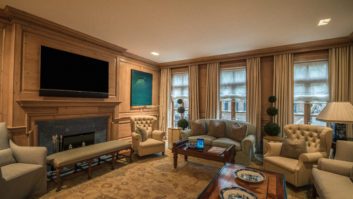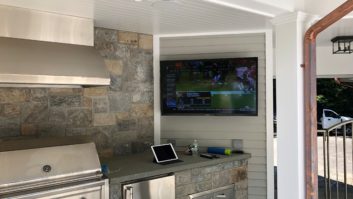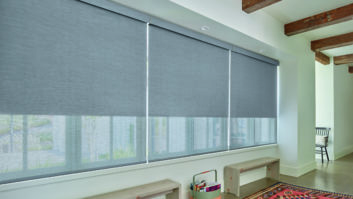They’re smart, easy to operate, and popular. You could say that smart speakers have it all. Or could you?

Audio in the ’50s and ’60s went through an evolution as home audio moved from mono to stereo, notes David Kroll, vice president, KEF America. “In the late ’80s it went through another evolutionary leap with the introduction of the first home surround sound systems. In the ’90s, the concept and acceptance of whole house audio was the third great evolutionary step. Now, at the touch of a button you can listen to whatever you want in any room of your house.”
With the introduction of MP3 players and smartphones, audio penetrated deeper into the homes of American consumers, he adds, “but interestingly, because it was being listened to on headphones and portable Bluetooth speakers, we actually took a step backwards with several generations growing up on mono again.”
Those generations are now settling down, moving into homes, and bringing their love of music and movies as they move beyond portable speakers, Kroll says. “At the same time, the flat panel TV has had a massive impact on audio in our homes. And we have seen the explosion of brands delivering whole house audio solutions from tiny components that conveniently fit the available storage space. The effect is that, although people have music in more and more rooms, it’s been difficult to achieve the highest quality sound as many of these small components and speakers are monaural, or do not have the ability to drive high-end loudspeakers.”
Clients Have the Smarts
Most consumers understand the concept of a smart speaker because nowadays everyone has a computer in their pocket with the advancement of smartphones, Jonathan Duran, director of residential sales and marketing, MSE Audio, explains. “Voice-control and integration that extends beyond the confines of the device itself has made people very familiar with all those basic concepts. Combine that with everyone’s familiarity with portable ‘wireless’ speakers, and people have a good grasp [on the technology].”

Smart speaker is a general term, though, he cautions. “Many manufacturers offer smart speakers with a plethora of features but poor sound quality. As more consumers become familiar with smart speakers, audio quality is going to become just as important, if not more important, than product features and compatibility.”
What Integrators Should Know
With the market being as highly competitive as it is, and multiple devices being sold across a multitude of storefronts, what residential integrators need to worry about is the ability to sustain a profit-model from the installation process, Duran adds. “Programming has slowly started to become a thing of the past as most devices are simple to integrate into a pre-existing network,” says Duran. “Most devices are fully-functional via WiFi protocols, so in most cases the installer is not even running wire. This provides an opportunity to combine smart technology (e.g., Alexa, Google Assistant, etc.) with traditional passive speakers and amplifiers. By providing better sound and more equipment, the installer can provide the homeowner a service that generates a profit and provides them with the opportunity to install systems across a multiple range of scenarios.”

A Smart Future
Smart audio is the future of the industry and all brands should focus on this right now, Kroll advises. “In 2018 smart speaker shipments were up 137 percent and Amazon smart speakers alone reached close to 15 percent of U.S. homes. These smart devices serve a very specific purpose right now, but consumers are already starting to demonstrate that they want more performance from their smart devices and more integration in their lifestyles.”
KEF sees a future high-end audio road map with the platform of a high-end loudspeaker, such as its LS50 Wireless, integrated within the loudspeaker cabinet. “This allows us to deliver the highest acoustic performance possible and to integrate it into the environment that now exists in people’s homes,” he adds. “Since we are matching the design of the electronics directly to the speaker, we can deliver performance for significantly less than what it would cost to deliver the same result from separate components.”
In conclusion, Kroll says, the explosion of what are called smart speakers — internet connected devices with verbal interface information — is duly recognized. “But the focus of most of the smart devices is not on the acoustic performance; the goal is to get into as many homes as possible so the price point must be accessible by the mass consumer market. Since the KEF integrated loudspeakers both can accept a direct digital connection as well as a network connection, we integrate beautifully with these smart devices, allowing you to choose the smart speaker interface you prefer but with endpoint that delivers a musical/acoustical content with audiophile-grade levels.”







